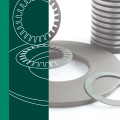Corrosion Protection for cb Disc Springs
Overview of Corrosion Protection
Spring steels have a tendency to corrode and, therefore, the various protective methods which may be used to combat these effects must be considered. As a general rule, any of the anti-corrosion platings or coatings which are used for precision disc springs merely delay the effects of corrosion on the parts. Corrosion in steel is actually a multi-level phenomenon consisting of a number of various influences and it is considerably beyond the scope of this handbook to discuss them in detail. The protective measures which have been detailed in Table 14 have been found to be eminently successful in protecting the disc spring's surfaces in practical use. Frequently, compromises must be made between an optimal and an economic corrosion protection. When the possibility of severe chemical corrosion exists in a particular application, it must be determined whether a corrosion resistant material is a better choice, especially when failure would result in high breakdown and replacement costs.
Because disc springs introduce load over a relatively small area of contact, the resultant surface pressures are high. In dynamic applications involving disc springs which have had any form of coating or surface layering applied, cracks and wearing of the coated, or layered, surface must be exported. Crevice corrosion and the forming of localized corrosion cells cannot, therefore, be prevented. When, however, the surface coating material is more noble than the base material over which it has been applied (for example, nickel plating), any damage to the plating layer will result in very strong corrosion of the base material due to the difference in the electro chemical potential which exists between the two materials.
Electroplated corrosion resistant coatings shouid not be applied to disc springs subject to alternating stresses, because current procedures for depositing metal coatings from aqueous solutions cannot, with any degree of certainty, preclude the risk of hydrogen embrittlement.
Commonly used corrosion protection coatings for CB Disc Springs and cb Fastener Bel levi l les
At Christian Bauer GmbH + Co. disc springs and "belleville" washers which have been made from low alloy spring steels are normally supplied with a coating of Zinc Phosphate, with the pores closed by application of an anticorrosion oil. In cases where parallel stacking or the installation causes the phosphate to rub off and where the phosphate particles would disturb the function of the application, disc springs can be supplied with anticorrosion oil applied over completely blank disc spring surfaces.
Larger sized disc springs intended for static applications may be coated with various forms of Wax or Grease for protection in outside environments if the springs are not directly exposed to the elements.
Zinc coatings of steel parts have been used for decades with excellent results. The anti corrosion property is attributed primarily to the fact that the zinc is less noble than the metal it is being used to protect. In damp or humid air, carbides, oxides, hydroxides, etc., tend to form on the zinc plated surfaces and these contribute to the further corrosion of the parts but chromating of the zinc surfaces will dramatically reduce this phenomenon. Zinc, when in contact with a steel substrate, acts anodic in the prescence of electrolytes; during the corrosion process, localized cells develop and the zinc becomes soluble while the base material still remains protected. This particular anticorrosion mechanism continues to work even when the complete integrity of the zinc surface layer has been compromised (a so called 'long range' protection). The corrosion protection provided by zinc is limited to corrosive mediums such as atmospheric conditions and/or water up to a maximum temperature of 60 degrees Celcius (140 degrees Fahrenheit). In an acidic or alkaline solution of organic material, zinc is not a durable anticorrosion medium and it is also not acceptable for use in applications in which food stuffs might contact the zinc plating.
Zinc Powder Paint may be used for large disc springs in small quantities. The deciding factors for the protective capability of this material are the binding agents contained in the product and the thickness of the layer which has been applied.
The most commonly used method for the application of zinc to cb disc springs is by Mechanical Zinc Plating. In this plating process the carefully cleaned parts are dipped and thinly coated with a copper layer by an electroless process. The disc springs are then tumbled in a drum which contains zinc powder and glass beads of varying sizes while a promotor is slowly introduced. The tumbling process is halted after approximately 9598% of the zinc powder which had been originally introduced is plated onto the disc spring surfaces and the parts are then chromated in a chromating solution. The effectiveness of the chromate layer is limited to a temperature of 60 degrees Celcius (140 degrees Fahrenheit).
Dacromet 320® is an anticorrosion method which was initially developed in the United States and which has, subsequently, been licensed for use by various firms throughout the world. The Dacromet® layer consists of zinc and aluminum platelets which have been chromated through a special chromating process (Internal Chromating). The thinly coated parts exhibit good corrosion resistance in salt spray testing.
Polyamide coatings have been used for many years to provide anticorrosion protection to "cb Fastener Bellevilles" which are used in outside environments. Because of the relatively low hardness of the polyamides and the variations in thickness of the coating, their use as coatings for disc springs is limited to static applications. Before a polyamide coating is applied, the disc springs are zinc plated in order to prevent the slightest damage to the polyamide leading to failure. Parts weighing up to 90 grams may be coated by means of a minicoating procedure; the parts are first warmed in a continous heat treating furnace and then they are immersed into a synthetic powder bath. The residual heat which is contained in these parts causes the thermoplastic powder to melt and fully adhere to the exposed surfaces. The final thickness of the polyamide layer which is applied by this method is determined by the amount of stored residual heat which is contained in the parts. Pieces which weigh in excess of about 90 grams may be coated by means of vortex type sintering procedures or by the electrostatic powder spraying.
Nickel plating is generally specified for the following characteristics: anticorrosion, resistance to wear and abrasion or for its cosmetic properties. Chemically applied nickel plating is used for disc springs; the procedure involves the application of a nickelphosphate alloy and the phosphate concentrations involved directly influence the condition of the final, finished coating surface. When the phosphate concentration is in the range of 1013 %, the best anticorrosion properties and the best ductility of the nickel is achieved. Lesser concentrations of phosphate will produce an increase in the wear resistance of the nickel layer but will also result in a decrease in the anticorrosion properties of the finished part. Hydrogen is formed as a side effect of the finishing processes of nickel plating and the risk of hyd rogen em brittlement ca n not be ignored.
Download here Table 14 pdf:
table_14.pdf

| Production and distribution of fasteners, fixing elements and mechanical parts machining |
GANDINI FASTENERS SRL viale Pier Paolo Pasolini, 83 Sesto San Giovanni Mi - Italy |
Sales department 250@gandini.it tel +39 02 241 047 250 |
Administration 350@gandini.it tel +39 02 241 047 350 |
Saturday, July 12, 2025
Download
Research
Login
Registered users can order print catalogues and technical manuals, ask for an offer or for samples.
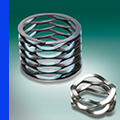 |  | 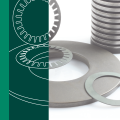 |  | 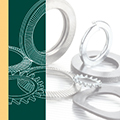 | 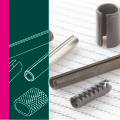 | 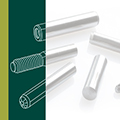 | 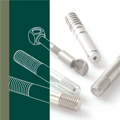 | 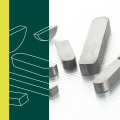 | 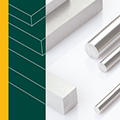 | 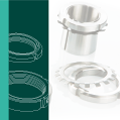 | 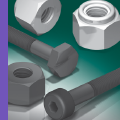 | 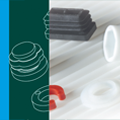 | 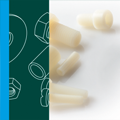 | |
 |
||||||||||||||


